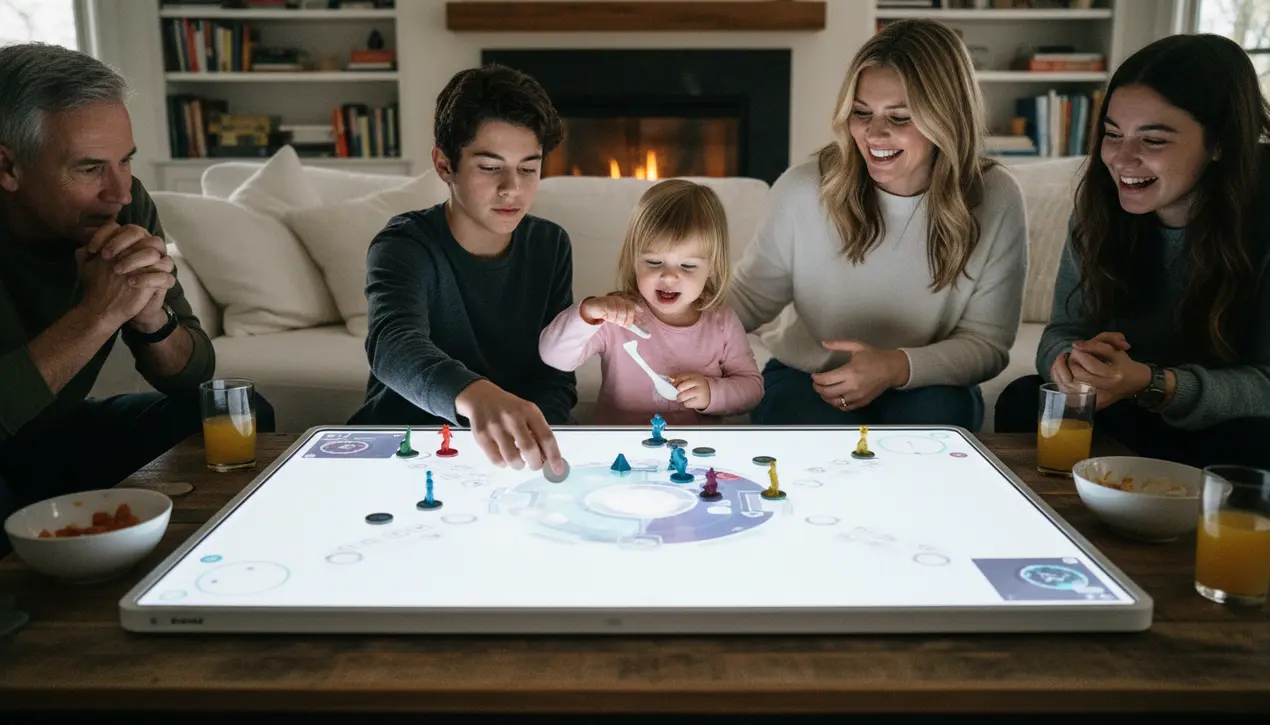
EntertainmentgamingGame Releases
New Board game console blends digital and physical family play.
AN
Andrew Blake
8 hours ago7 min read5 comments
In the strange, cloistered days of the pandemic, entrepreneur Brynn Putnam found herself in a familiar domestic quandary. Fresh from the monumental sale of her smart fitness company, Mirror, to Lululemon for a cool $500 million, she was living with five children whose ages spanned from toddler to young adult.The quest for a unifying family activity felt as elusive as a coherent national policy. The classic board games, like Candyland, were accessible for the littlest ones but often failed to captivate the teens.Conversely, the digital realms of video games became a playground where controller-savvy teenagers effortlessly dominated their less-experienced family members, creating a fun deficit rather than a surplus. This personal friction point sparked the genesis of Board, Putnam's ambitious new venture that seeks to bridge the chasm between the tactile, social world of board games and the dynamic, interactive universe of video gaming.The device itself is a 24-inch console, aesthetically reminiscent of a gargantuan iPad, but its core function is its true innovation. It's a hybrid platform where physical game pieces—from tokens to specialized utensils—interact directly with a responsive digital screen, creating a shared, face-to-face experience that leverages technology to connect, not isolate.Launched on October 28th with a holiday price tag of $499, Board comes pre-loaded with a dozen exclusive games designed for up to ten players, and the company, while guarded with specific figures, has already seen it surpass initial sales forecasts. The engineering hurdles were significant.As Chief Technology Officer Ryan Measel explains, commercial touchscreens are fundamentally limited, typically recognizing only ten finger touches and utterly baffled by objects. To overcome this, his team built a custom driver, bypassing the restrictive layers of Android and iOS to gain full access to the console's sensor array.The magic lies in an embedded AI model trained to interpret the screen's sensory outputs, distinguishing between an accidental brush of a hand, an intentional tap, and the unique conductive trace etched onto the bottom of each of the 49 distinct game pieces. Durability was another non-negotiable, especially for a product aimed at families with young, sometimes destructive, members.Putnam recounts rigorous testing that saw prototypes submerged, dropped, and scratched, with her own two-year-old providing real-world stress tests. The result is a spill-resistant device built to withstand the chaos of family life.The philosophical underpinning of Board is perhaps its most compelling feature. In an era where screen time is often synonymous with solitary consumption, Board flips the script.It uses the digital screen not as a portal to individual escape, but as a canvas for collective play. As Putnam eloquently notes, the technology handles the tedious administrative tasks of gaming—rule maintenance, scorekeeping—freeing players to focus on strategy, laughter, and the simple joy of being present with one another.It’s a conscious effort to reclaim technology for the living room, creating a new category of entertainment that honors the nostalgic ritual of game night while embracing the boundless possibilities of the digital age. The company is already looking ahead, with Chief Creative Officer Seth Sivak expanding the game library and plans to release a software development kit to invite external creators into the fold, suggesting that this novel blend of physical and digital play is not just a pandemic-born idea, but the foundation for a new paradigm in how families interact with technology.
#Board game console
#hybrid gaming
#family entertainment
#Brynn Putnam
#Mirror founder
#featured
Stay Informed. Act Smarter.
Get weekly highlights, major headlines, and expert insights — then put your knowledge to work in our live prediction markets.
Related News
Comments
Loading comments...
© 2025 Outpoll Service LTD. All rights reserved.